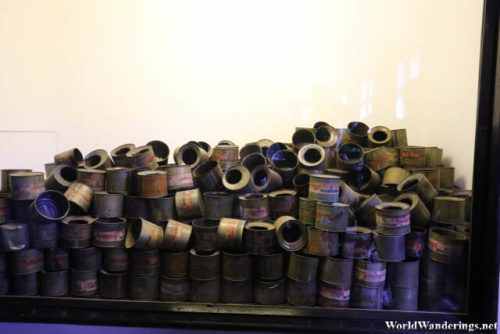As Nazi Germany took over large parts of Europe. The relentless purge of Jews and other races continued within the occupied territories. These prisoners were rounded up and sent to concentration camps for labor. This systematic process of rounding up and shipping of prisoners over to the camps almost became an art form. The camp authorities had to build more structures to house these prisoners but the prisoners kept coming. So what did they do when they have too many undesirable prisoners? They got rid of them. Whether intentionally or not, these labor camps then became extermination camps and the site of the most horrific acts done by man.
It is very well known now that the Nazi Germans operated gas chambers in the concentration camps. These were used to kill a lot of prisoners all in one go. Because of the large number of prisoners which needed to be killed. The Nazi’s needed a more efficient way of achieving this. The result of that research is named Zyklon B, a chemical whose active ingredient was hydrogen cyanide. It is used as a gas which is exposed to the prisoners in the gas chamber. The prisoners are led to the chamber under the pretense that they would cleaned. A normal person would only need to inhale 70mg of hydrogen cyanide to die. Indeed the chemical was very efficient. Unbelievably, the Nazi Germans found a way to perform industrialized killing. In one of the exhibits, empty canisters of Zyklon B were on display. If it takes only 70 mg of hydrogen cyanide to kill one person, how many people did all these canisters kill?
[xmlgm {http://www.worldwanderings.net/kml/Auschwitz.kmz} zoom=19]

